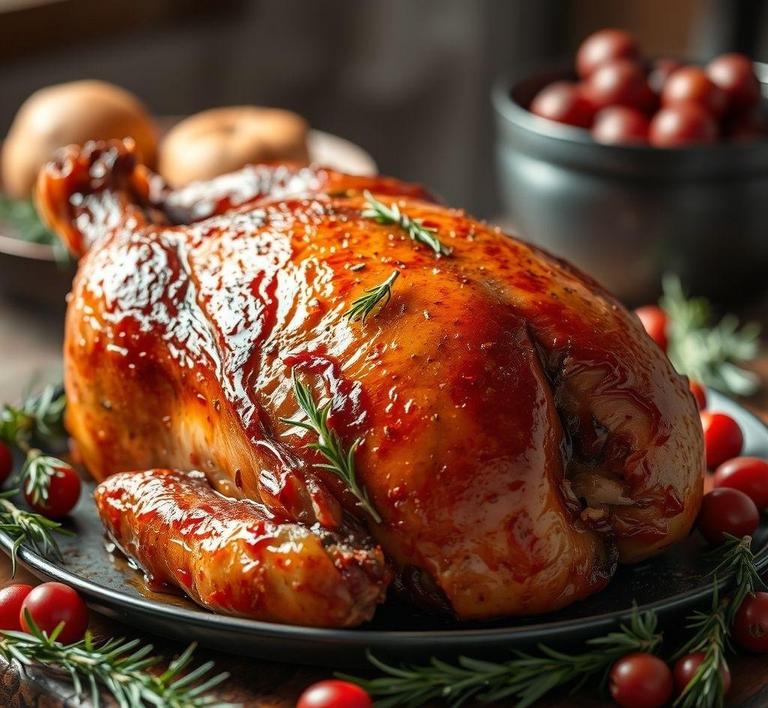If you’ve ever found yourself with leftover smoked turkey breast, you might be wondering if it’s safe to refreeze it and how to do it properly. Refreezing smoked turkey breast can be a great way to extend its shelf life and make sure you don’t waste that deliciously flavorful meat. However, there are some important things to consider to ensure it stays safe to eat and maintains its taste and texture. In this guide, we’ll walk you through everything you need to know about refreezing smoked turkey breast, from the best methods for wrapping and storing it to tips on reheating it so it tastes just as good as when you first smoked it.
Can You Refreeze Smoked Turkey Breast?

Yes, you can refreeze smoked turkey breast-but with some caveats. The key lies in how the turkey was handled after it was initially thawed or cooked. If the smoked turkey breast was defrosted in the refrigerator and kept at a safe temperature (below 40°F or 4°C) the entire time, it is generally safe to refreeze.
However, if the turkey was thawed on the counter or left out at room temperature for more than two hours, refreezing is not recommended. This is due to the risk of bacterial growth, which can lead to foodborne illnesses. Even if the turkey appears and smells fine, bacteria like Salmonella or Listeria could be present and multiply rapidly at room temperature.
Food safety experts from the USDA confirm that foods thawed in the refrigerator can be safely refrozen without cooking, although there may be some loss of quality. This applies to smoked turkey breast, which, while cooked, is still a perishable item.
How To Refreeze Smoked Turkey Breast?
If you’ve determined your smoked turkey breast meets the safety criteria, here’s how to refreeze it effectively to preserve as much of its original flavor, texture, and quality as possible:
-
Cool It Down Quickly:
- Before freezing, make sure the turkey is completely cool. If it’s freshly smoked or warmed, let it rest in the refrigerator until chilled through. Never place warm meat directly into the freezer-it will raise the overall temperature and may compromise other frozen items.
-
Portion for Convenience:
- Slice or portion the smoked turkey breast into usable servings. This not only makes defrosting easier later on but also prevents repeated freezing and thawing, which degrades quality.
-
Wrap It Right:
- Use high-quality freezer-safe materials such as vacuum-sealed bags, heavy-duty aluminum foil, or airtight containers. If vacuum sealing isn’t an option, wrap the portions tightly in plastic wrap and then in a layer of foil or place them in a zip-top freezer bag, removing as much air as possible to prevent freezer burn.
-
Label and Date:
- Always label each package with the date of freezing. While smoked meats can last longer than fresh ones in the freezer due to their lower moisture content and preservatives from the smoking process, it’s ideal to use them within 2-3 months for best taste and texture.
-
Freeze Promptly:
- Don’t leave it in the refrigerator for too long before freezing. The sooner it’s frozen after cooling, the better the preservation of flavor and juiciness.
Quality Impact
While refreezing smoked turkey breast is safe if done correctly, the process does have implications for quality. Each freeze-thaw cycle causes moisture loss in meat. This is because ice crystals form within the muscle fibers during freezing and rupture the cell walls. When thawed, the juices that escape make the meat feel drier and less succulent.
Smoked meats, in particular, have a robust flavor profile that may hold up better to freezing than plain cooked meats. However, the texture of a previously frozen and refrozen smoked turkey breast might become slightly more fibrous or rubbery-especially if it wasn’t wrapped properly.
Another factor to consider is the aroma and subtle notes imparted by the smoking process. These may dissipate slightly with each freeze, leaving behind a less intense smoky character.
If you’re using the refrozen smoked turkey in casseroles, soups, or stews, the quality differences will be less noticeable. But if you’re planning to serve it cold on a charcuterie board or in sandwiches where the texture and flavor are front-and-center, the changes may be more apparent.
Refreezing smoked turkey breast is entirely possible-and safe-provided that the turkey was thawed correctly and has been kept at a consistent, safe temperature. Taking care to package and freeze it properly will go a long way in preserving its smoky richness and tender texture. While you may notice a slight dip in quality after the second freeze, especially in terms of moisture and mouthfeel, thoughtful preparation can ensure that your leftovers are still delicious and satisfying.
Is It Safe To Refreeze Smoked Turkey Breast?
The short answer: Yes, it is generally safe to refreeze smoked turkey breast-but with important caveats.
The key determinant lies in how the smoked turkey breast has been handled since it was initially thawed. If the turkey was thawed safely in the refrigerator and has remained at or below 40°F (4°C), it can be refrozen without significant risk of foodborne illness. This is because refrigerator thawing prevents bacterial growth, which thrives between 40°F and 140°F-also known as the "danger zone."
However, safety isn’t the only consideration. While refreezing smoked turkey breast is permissible from a microbial standpoint, repeated freezing and thawing can degrade its quality. The tender texture and smoky richness may diminish slightly due to moisture loss and protein structure breakdown, resulting in a dryer, less flavorful product upon reheating.
If the turkey was thawed at room temperature, in warm water, or in the microwave and then left sitting out, the safe window closes fast. In such cases, bacteria may multiply rapidly, making the meat unsafe to eat-let alone refreeze.
Signs That Smoked Turkey Breast Should Not Be Refrozen
Even when your intentions are good, sometimes smoked turkey breast simply isn’t fit for another stint in the freezer. Watch for these warning signs that indicate spoilage or potential bacterial contamination:
- Off Odors: A pungent, sour, or sulfur-like smell is a surefire indicator that the turkey has turned. Trust your nose-if it smells off, it probably is.
- Slimy Texture: Smoked turkey should have a firm, slightly moist texture. A slimy or sticky surface often signals bacterial growth and spoilage.
- Discoloration: If the meat has turned a dull gray, greenish hue, or has darkened excessively, these visual cues may suggest decomposition. This is especially concerning in processed or brined meats.
- Room Temperature Exposure: If the turkey has been left out for more than 2 hours-or 1 hour in hot environments-it’s not safe to refreeze. The risk of harmful bacterial growth (like Salmonella or Listeria) is simply too high.
- Ice Crystal Formation After Improper Storage: If you notice excessive ice crystals or freezer burn from previously thawed meat, it’s often an indication that the turkey has lost a lot of moisture. While not always dangerous, it suggests quality degradation and may signal previous thawing.
Common Refreezing Mistakes
Refreezing food isn’t as straightforward as tossing it back into the freezer. Missteps here can lead to unsafe conditions or subpar meals. Here are a few of the most common errors:
- Refreezing After Room Temperature Thawing: A cardinal sin in food safety. Always thaw in the fridge. Leaving smoked turkey breast on the counter invites bacteria to the party.
- Refreezing After Too Long in the Fridge: Turkey should be refrozen within 3-4 days of refrigerator thawing. Waiting longer increases the risk of spoilage.
- Ignoring Quality Loss: Even if it’s safe, refreezing turkey that’s already dry or stringy won’t yield good results. Think quality as well as safety.
- Not Sealing Properly: Refreezing meat in poorly sealed containers or bags leads to freezer burn. This causes dry patches and flavor loss due to oxygen exposure.
- Using the Wrong Container: Avoid reusing containers that held raw poultry unless properly sanitized. Cross-contamination risks lurk.
Tips And Tricks
To maximize safety and flavor when refreezing smoked turkey breast, try these practical strategies:
- Portion Before Freezing: Slice or separate into meal-sized portions before freezing. This reduces repeated thaw-refreeze cycles and minimizes quality degradation.
- Vacuum Seal or Wrap Tightly: Use vacuum sealers or heavy-duty freezer bags to prevent air exposure. Double wrap with plastic and foil for added protection.
- Label Clearly: Include dates and portion sizes on containers. This ensures you use the oldest stock first and track storage time.
- Use Within 2-3 Months: For best taste and texture, consume refrozen smoked turkey breast within 2 to 3 months. While it remains safe longer if continuously frozen, quality drops significantly beyond this window.
- Reheat to 165°F (74°C): When it’s time to enjoy, make sure the turkey is heated thoroughly to kill any potential bacteria introduced during handling.
Conclusion
Refreezing smoked turkey breast is entirely safe-provided it’s done correctly. The golden rules revolve around proper thawing, swift action, and diligent observation of texture, smell, and storage time. While the freezer is a powerful tool to extend the life of your favorite smoky delicacy, it’s not a magic wand. Each freeze-thaw cycle chips away at the turkey’s succulence and flavor.
Ultimately, by staying alert to signs of spoilage, avoiding common pitfalls, and following smart storage practices, you can safely refreeze smoked turkey breast without compromising on taste or food safety. Whether you’re prepping for leftovers or simply preserving a feast, a bit of knowledge goes a long way toward keeping your meals delicious and your household safe.


